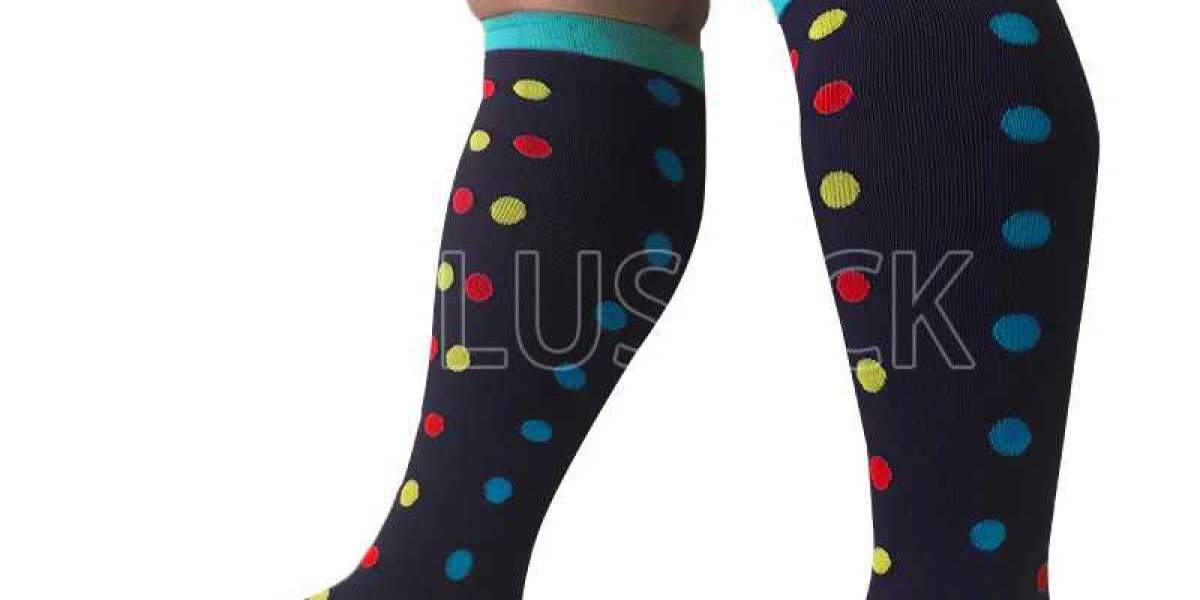Compression stockings are designed to support leg health by improving circulation, reducing swelling, and providing stability. For those with larger leg sizes, selecting the right plus size compression stockings is crucial for maximizing these benefits. This article explores the essential aspects of plus size compression stockings, including their benefits, key features, and factors to consider when purchasing.

The Purpose of Compression Stockings
Compression stockings apply graduated pressure to the legs, with the highest pressure at the ankle and gradually decreasing towards the knee or thigh. This design promotes better blood flow back to the heart, helping to alleviate symptoms associated with various conditions such as chronic venous insufficiency, varicose veins, and edema. For individuals with larger legs, these stockings are specifically tailored to ensure effective compression while accommodating larger sizes.
Benefits of Plus Size Compression Stockings
Plus size compression stockings offer numerous benefits, particularly for those with larger leg sizes. One of the primary advantages is improved circulation. By applying consistent pressure, these stockings help prevent blood from pooling in the veins, which can reduce the risk of swelling and blood clots. Additionally, they are effective in managing existing swelling and can provide relief from discomfort associated with poor circulation.
Comfort is another significant benefit. Plus size compression stockings are designed to fit larger leg sizes comfortably, without compromising on the compression needed for effective therapy. This ensures that users experience the therapeutic benefits of compression without the discomfort that can come from improperly fitted stockings.
Key Features to Look For
When selecting plus size compression stockings, several key features are essential to consider. First and foremost is the sizing and fit. Accurate sizing is crucial to ensure that the stockings provide the right amount of compression. Most manufacturers offer sizing charts that are based on measurements of the ankle, calf, and thigh circumference, as well as the length of the leg. Using these charts can help you find a pair that fits well and provides the necessary support.
Compression level is another critical factor. Compression stockings come in various levels, ranging from mild to high. Mild compression (15-20 mmHg) is suitable for general support and minor swelling, while moderate compression (20-30 mmHg) addresses more significant issues such as moderate swelling and varicose veins. High compression (30-40 mmHg) is typically recommended for severe conditions like chronic venous insufficiency or deep vein thrombosis. Choosing the correct level based on your specific needs ensures that you receive appropriate support.
Material and breathability also play a role in comfort. Plus size compression stockings are commonly made from blends of materials such as cotton, nylon, and spandex. Cotton offers softness and breathability but may lack the durability of synthetic fibers. Nylon and spandex provide the necessary elasticity and durability to maintain compression over time. Opting for stockings made from moisture-wicking materials can help keep your feet dry and comfortable, reducing the risk of irritation or fungal infections.
Style and Design Considerations
Compression stockings are available in various styles, including knee-high, thigh-high, and full-length options. Knee-high stockings extend from the foot to just below the knee and are ideal for general use and support. Thigh-high stockings provide coverage from the foot to the upper thigh, offering more extensive compression and support. Full-length stockings cover the entire leg, providing comprehensive compression for those with severe conditions.
The design and aesthetic of the stockings can also be a consideration. While functionality is the primary concern, many brands offer compression stockings in a range of colors and patterns, allowing users to choose a style that suits their personal preferences and wardrobe.
Choosing the Right Brand and Quality
Investing in high-quality compression stockings from reputable brands ensures that you receive a product that performs well and lasts over time. Brands known for their quality typically undergo rigorous testing and offer products that maintain their elasticity and effectiveness. Reading reviews and seeking recommendations can help you identify trustworthy brands that deliver reliable compression therapy.
Care and Maintenance
Proper care is essential to extend the lifespan of your compression stockings. Follow the manufacturer's instructions for washing and drying. Typically, compression stockings should be washed in cold water and air-dried to prevent damage to the elastic fibers. Avoid using bleach or fabric softeners, as these can weaken the material and reduce the effectiveness of the compression.
Regularly inspect your stockings for signs of wear and tear. If you notice any holes, loss of elasticity, or other damage, it is time to replace them. Proper maintenance ensures that you continue to benefit from the therapeutic properties of your compression stockings.
Consulting a Healthcare Provider
Before purchasing compression stockings, especially if you have specific health concerns or conditions, it is advisable to consult with a healthcare provider. They can offer personalized recommendations based on your medical needs and help you choose the appropriate level of compression and style for your situation.
Conclusion
Plus size compression stockings are essential for individuals with larger leg sizes who require effective compression therapy. By considering factors such as sizing, compression level, material, style, and brand quality, you can select a pair that enhances circulation, reduces swelling, and provides comfort. Proper care and maintenance further ensure that your stockings remain effective and comfortable over time. With the right pair of plus size compression stockings, you can enjoy the numerous benefits of improved leg health and overall well-being.









